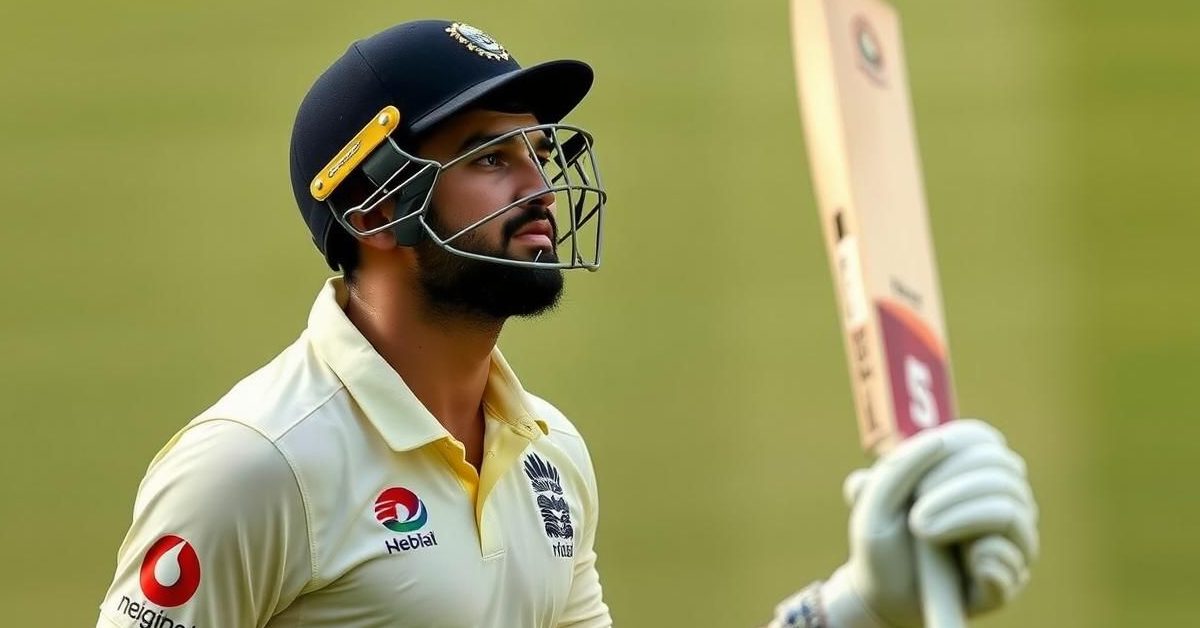The Crucible of Day Five: Headingley’s Shifting Sands
Few spectacles in sports command as much raw tension and strategic depth as Day Five of a Test match. The pitch, once a vibrant green canvas, slowly transforms into a battle-scarred terrain, dictating fortunes with every crack and scuff. At Headingley, Leeds, this age-old narrative took a fascinating turn as India squared off against England, with all eyes fixated on the deteriorating surface that held the key to a historic victory. The anticipation was palpable, a thick atmosphere woven from uncertainty and high stakes, as the final day loomed with promises of dramatic twists.
From Green Seam to Cracking Canvas: Unpacking Headingley’s Evolution
What began as a typical English strip, offering prodigious seam movement and disconcerting swing for the fast bowlers, gradually morphed into something altogether more complex. The initial liveliness that characterized the first two days, allowing seamers like Jasprit Bumrah and Mohammed Shami to wreak havoc, gave way to a more capricious beast. As the sun baked down and the overs piled up, subtle but significant changes emerged. Deliveries began to stay uncomfortably low, creating doubts in the batsmen’s minds, while patches of rough, created by the bowlers’ follow-throughs, offered tantalizing purchase for the spinners. This evolution wasn’t sudden; it was a slow, deliberate erosion of predictability, turning the pitch into a truly enigmatic entity.
KL Rahul’s Verdict: A Subcontinent Revelation in Leeds?
The most intriguing insight into Headingley’s metamorphosis came from India’s astute opener, KL Rahul. His comparison was startling, yet deeply insightful: “Cracks opening up, Headingley is like a subcontinent pitch on Day 5.” This wasn’t merely a casual observation; it was a profound strategic assessment. For a player who has spent countless hours batting on the dry, turning tracks of India, Sri Lanka, and Bangladesh, Rahul’s remark speaks volumes. On the subcontinent, Day Five pitches are notorious for their variable bounce, widening cracks, and significant turn, making batting an exercise in calculated risk and survival. The implication? England’s batsmen, more accustomed to the consistent bounce of home wickets, faced an unfamiliar challenge that could tilt the balance decisively in India’s favor.
The Tactical Chessboard: Who Benefits from Headingley’s Capricious Nature?
Such conditions naturally favor specific skill sets. For India, this meant the potential unleashing of their spin maestro, Ravichandran Ashwin, even if he hadn’t played a significant role earlier in the match. His guile, flight, and ability to exploit even minimal turn could become incredibly potent. Equally, the low bounce would test the defensive techniques of England’s top order, including captain Joe Root and dynamic all-rounder Ben Stokes, making them vulnerable to both spin and the skidding deliveries of India’s pacers. Conversely, for England’s spinners like Moeen Ali, the rough could offer a lifeline, potentially creating a late-game surge. The psychological battle was as crucial as the physical one, with every dot ball and every boundary carrying immense weight.
A Legacy Forged: The Stakes as India Eyes a Historic Win
For India, a victory at Headingley would not just be another Test win; it would be a statement. Following their resilient draw at Trent Bridge and a hard-fought battle elsewhere, clinching this Test would mark a significant step in their quest to conquer English conditions, a feat that has historically eluded many touring sides. The prospect of Virat Kohli leading his team to a memorable triumph in England adds another layer of intrigue, building on the legacy of previous Indian captains who have attempted to scale this particular peak. For England, led by Joe Root, resisting this Indian charge on home soil was paramount to their series aspirations and avoiding a deep hole from which recovery would be arduous. The ground itself, steeped in history from Botham’s Ashes heroics to Stokes’ modern-day marvels, seemed ready to write another thrilling chapter.
The Unfolding Drama: What Awaits on Headingley’s Grand Finale?
As the players stepped onto the hallowed turf for the final day, the air was thick with anticipation. Would the cracks widen further, creating unplayable deliveries? Would the rough patches become minefields for batsmen, or playgrounds for spin wizards? Every over, every ball, promised to contribute to the unfolding drama. It wasn’t just about runs and wickets; it was about nerve, resilience, and the sheer unpredictability that only Test cricket can deliver. The contest transcended mere sport, becoming a captivating narrative of human endeavor against the elements, a testament to the enduring appeal of the game’s longest format.
Beyond the Boundary: The Enduring Allure of Test Cricket
The Headingley pitch, with its subtle shifts and surprising behavior, epitomized the enduring allure of Test cricket. It’s a format where the playing surface itself becomes a character, evolving and influencing the drama. KL Rahul’s insightful observation brought to light the unique challenges presented, underscoring that even in seemingly familiar conditions, cricket can always throw up a fresh set of puzzles. As India pushed for that famous win, and England fought valiantly for survival, the stage was set for a climax that promised to be etched in the annals of this storied ground, long after the final ball was bowled.













